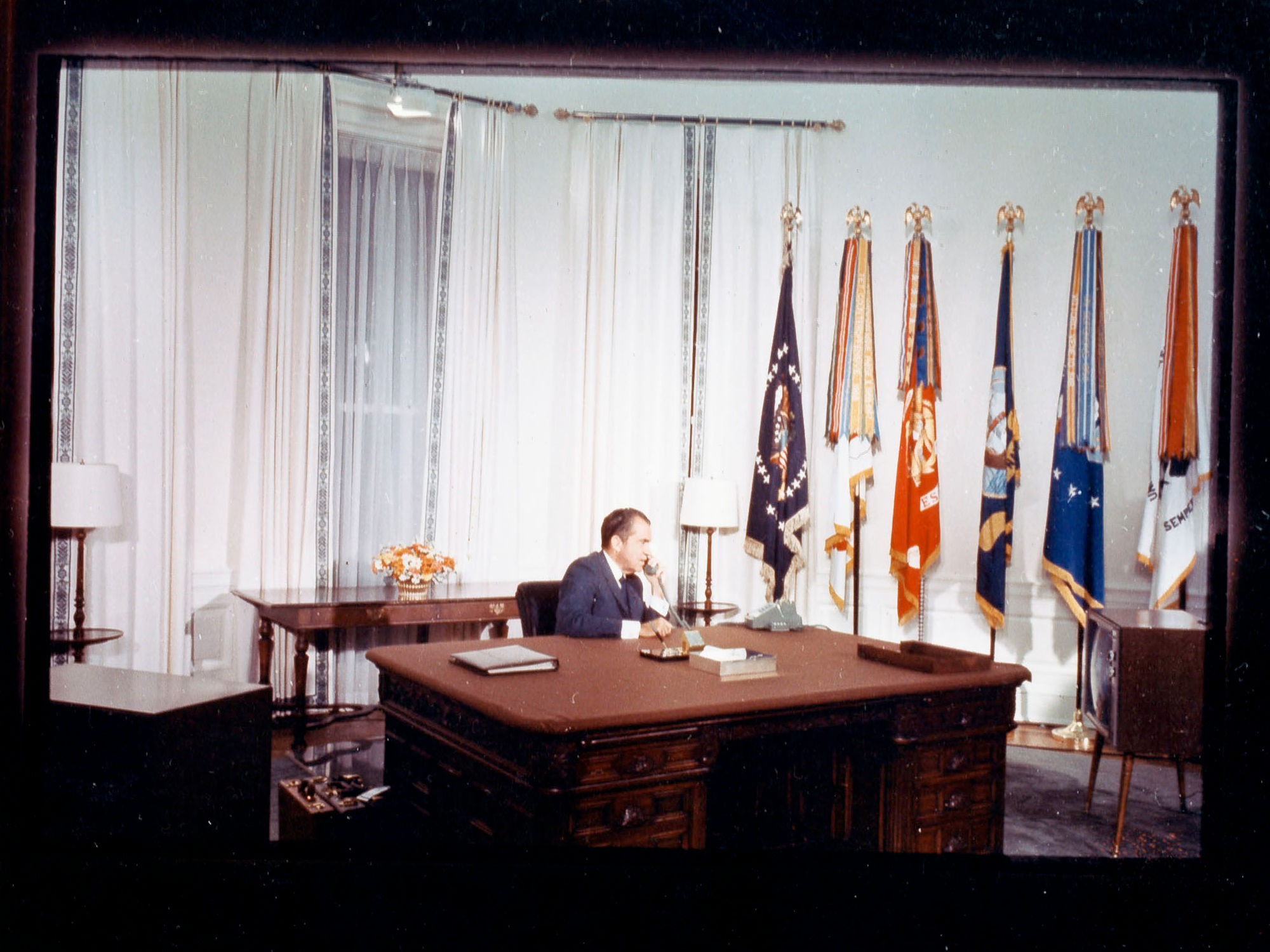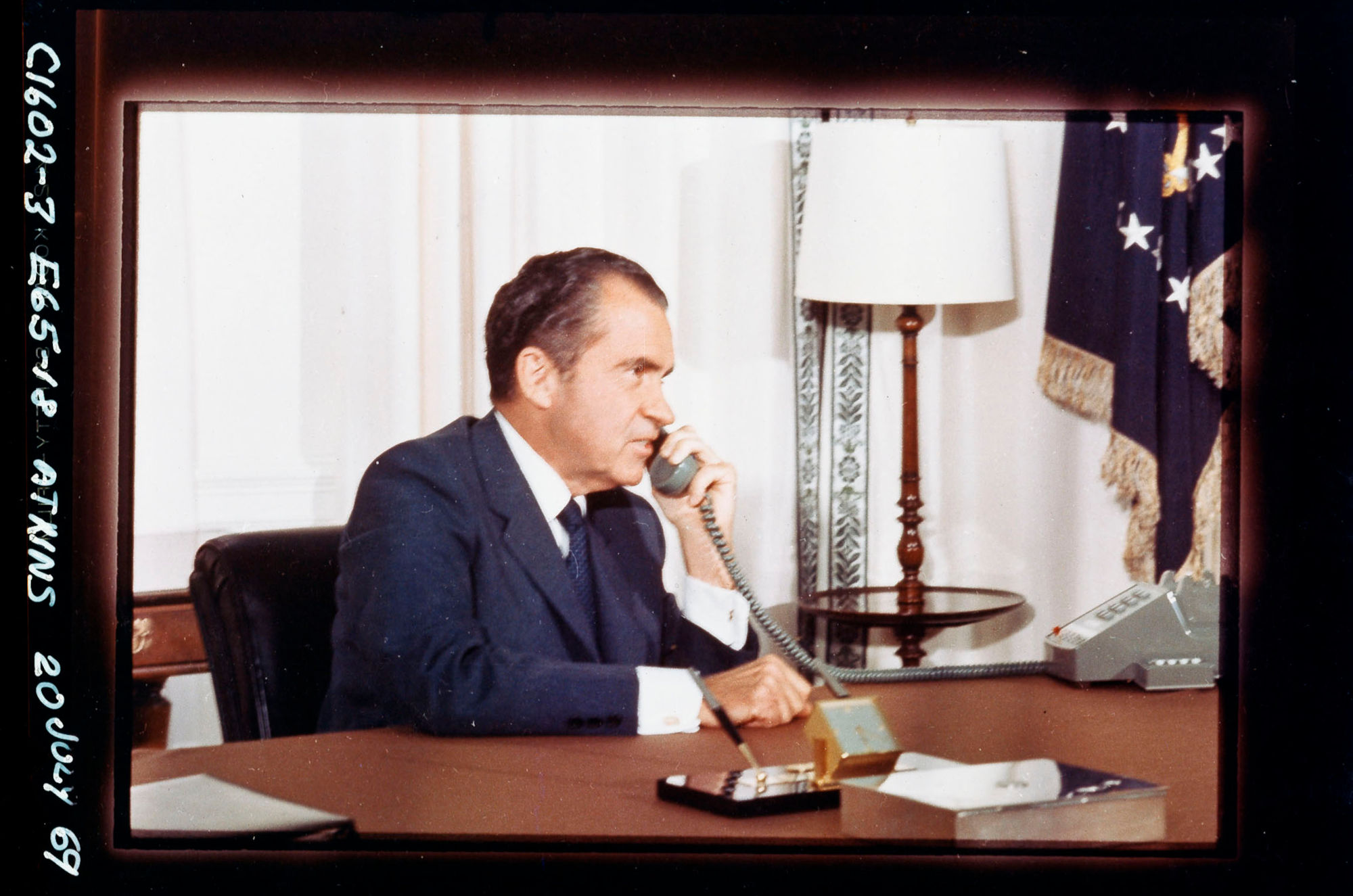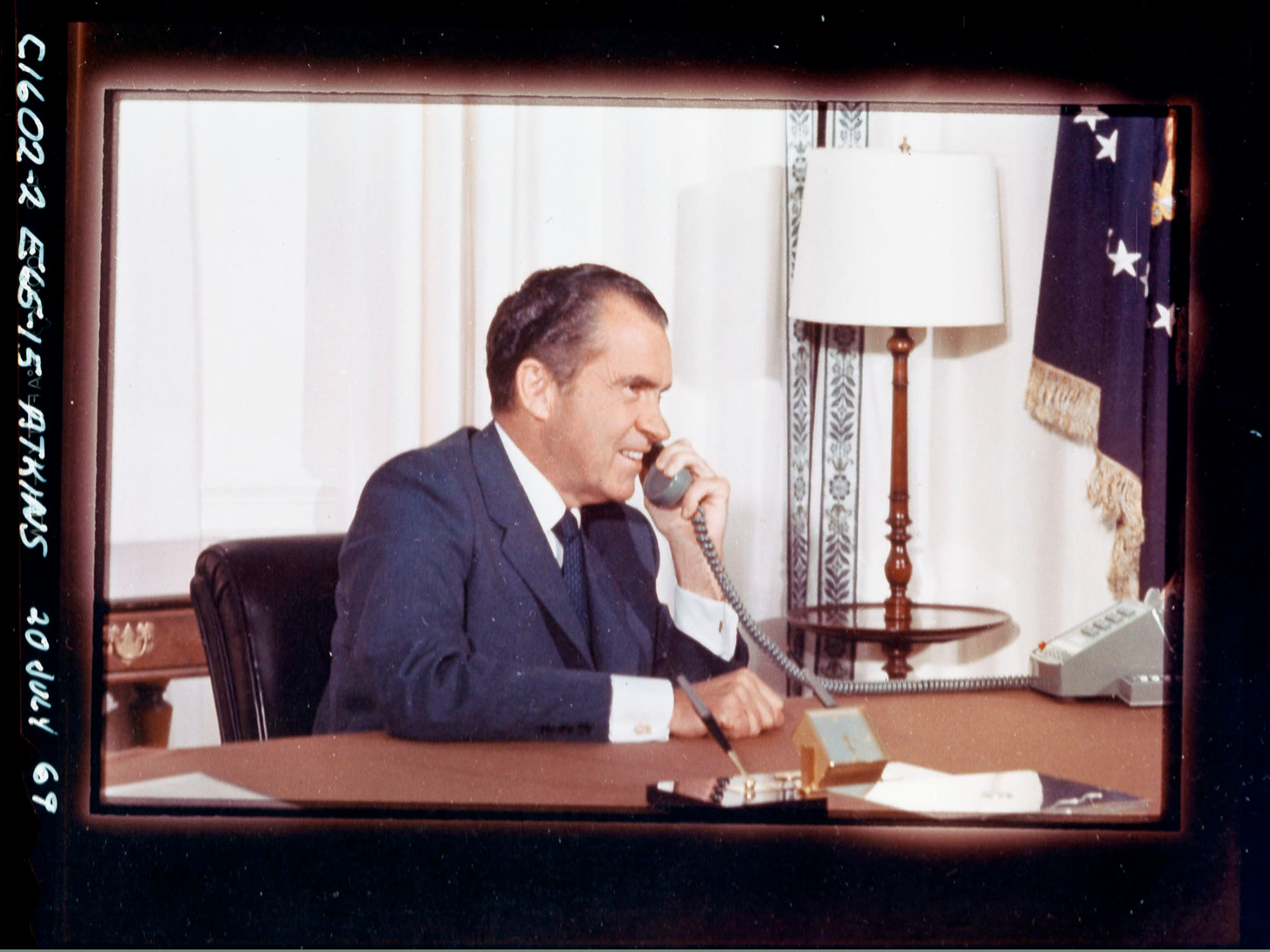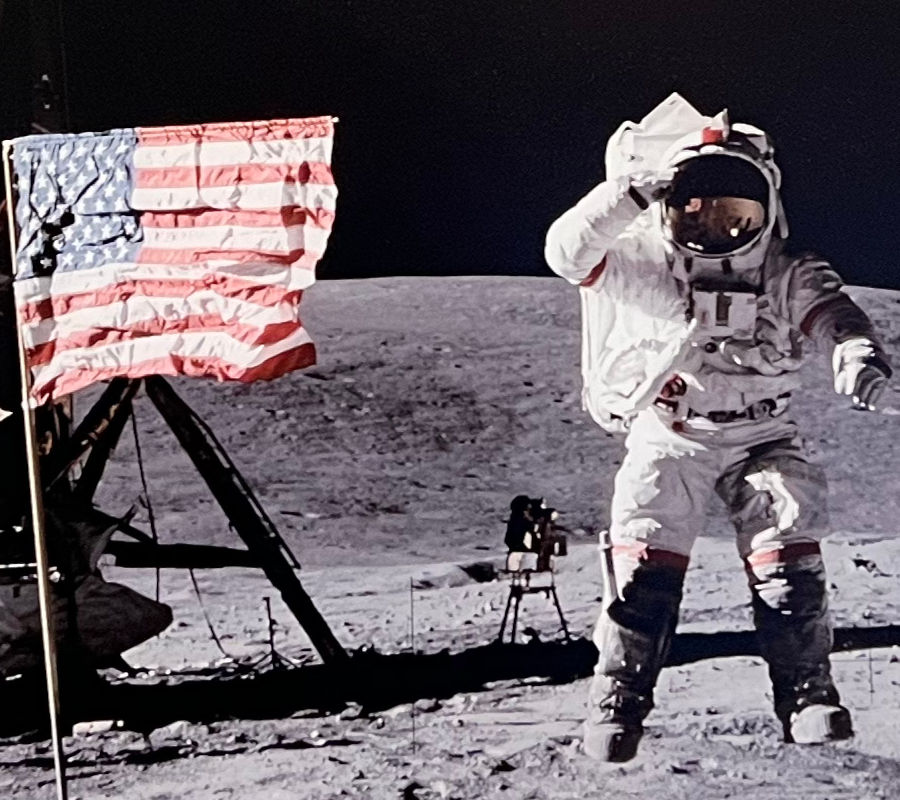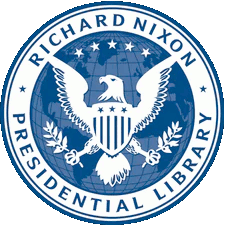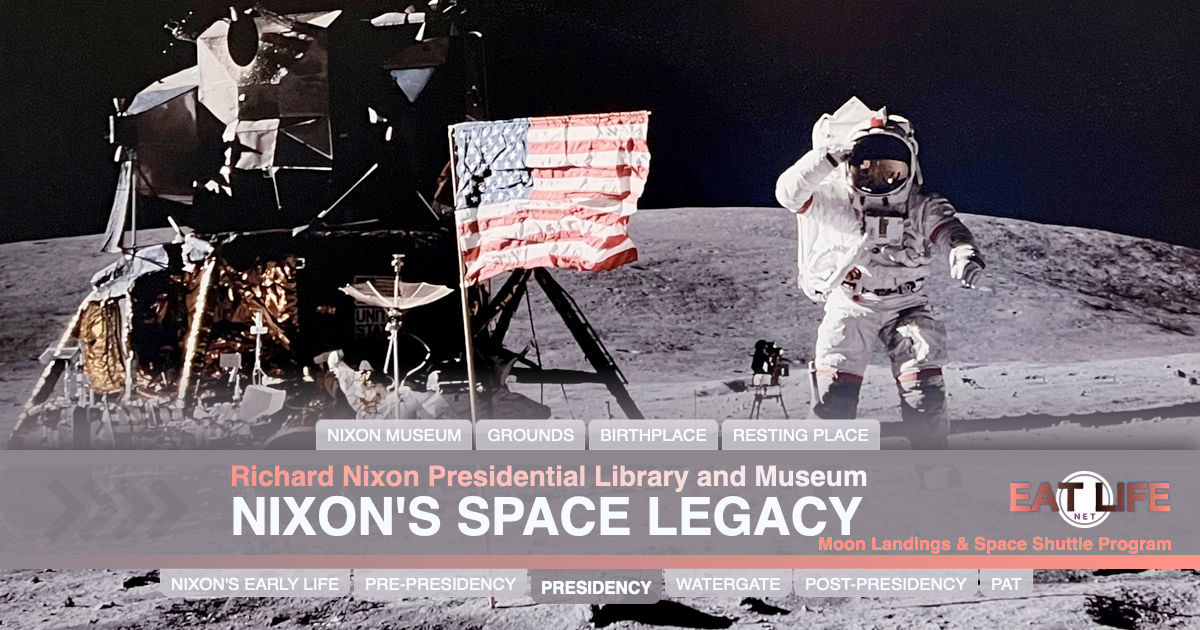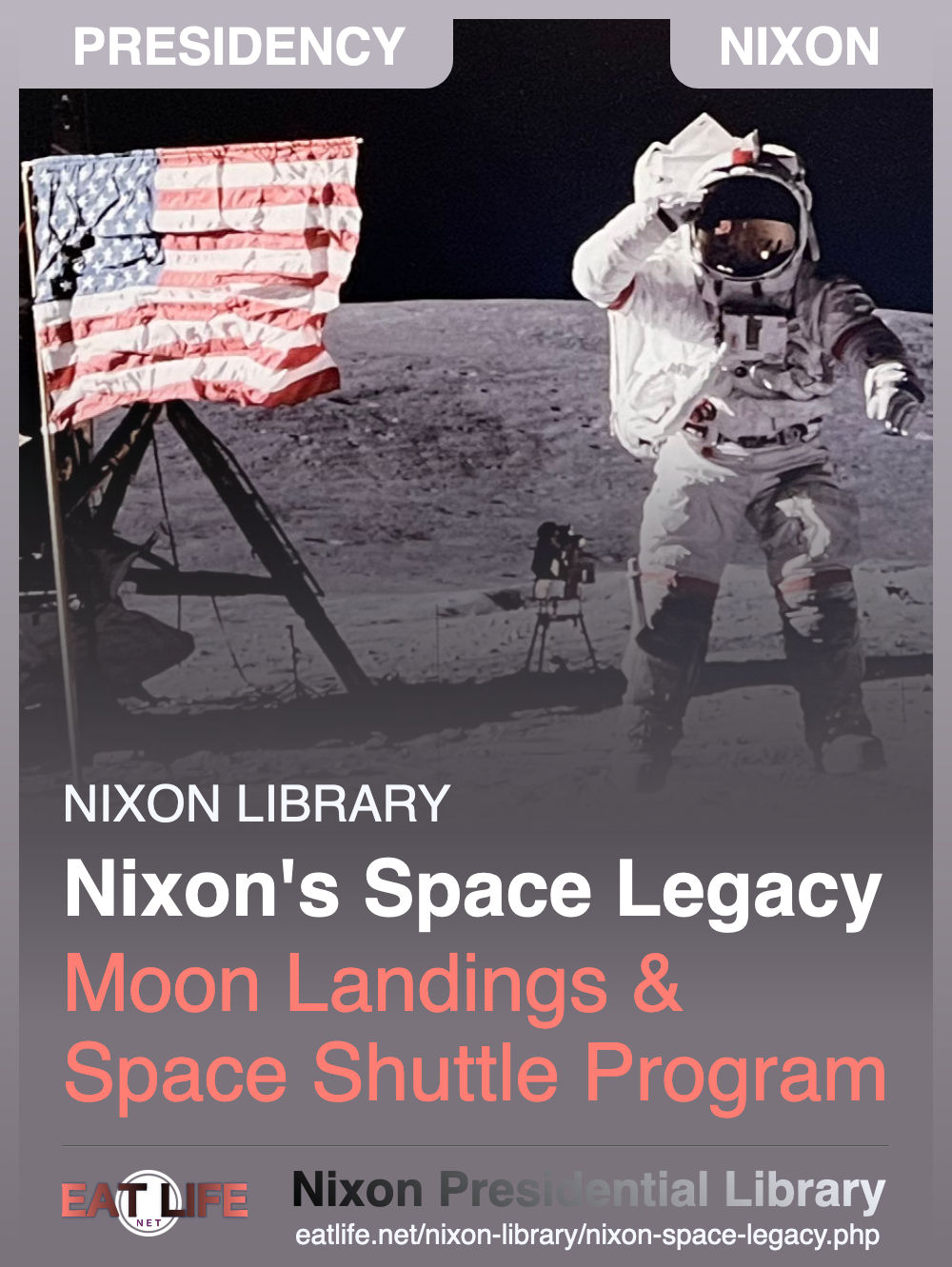Nixon as President
January 20, 1969 – August 9, 1974
PRESIDENCY
Updated: December 2024
Posted: January 2024
NASASpace Policy
Even before becoming President, Richard Nixon understood the importance of America's space program. As Vice President, he was a strong supporter of exploring outer space.
As President, Nixon recognized that the space program encouraged important scientific research that would produce many practical applications. He appreciated that it excited Americans capacity for wonder. And he knew that it could contribute to the nation's reputation and national defense, a significant concern in the midst of the Cold War. But all of these goals needed to be part of a concerted plan woven into overall policy.
After the success of the six completed Apollo Moon missions, the President decided to shift NASA's focus to the Space Shuttle program - creating a new flexible, reusable vehicle that could serve a variety of roles.
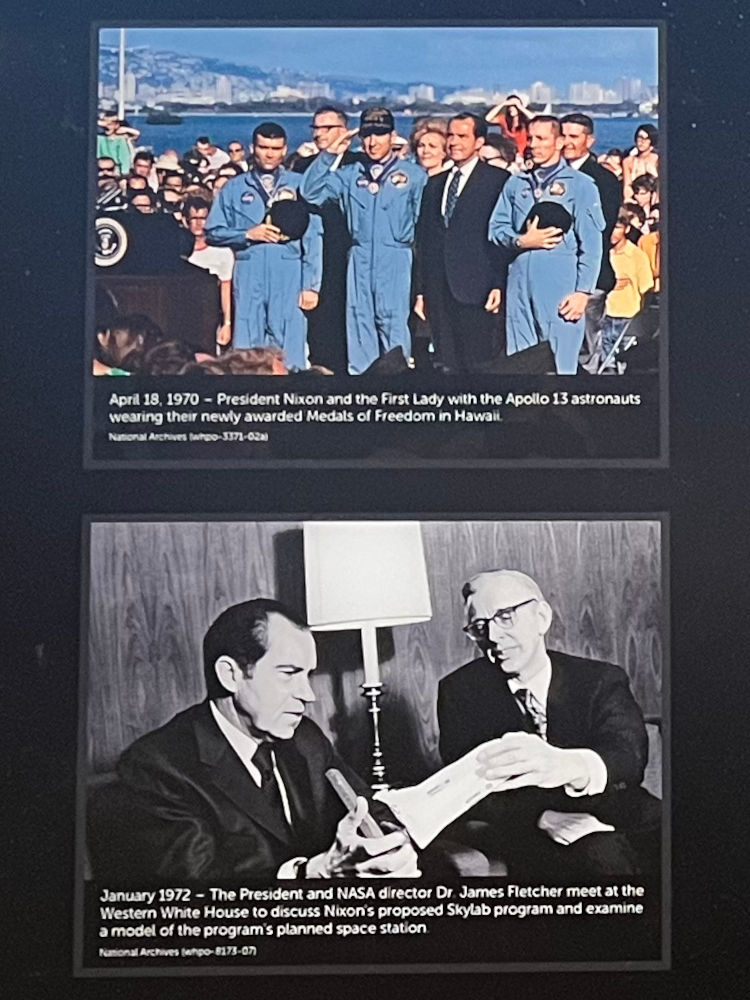
- April 18, 1970
President Nixon and the First Lady with the Apollo 13 astronauts wearing their newly awarded Medals of Freedom in Hawaii. - January 1972
The President and NASA director Dr. James Fletcher meet at the Western White House to discuss Nixon's proposed Skylab program and examine a model of the program's planned space station.
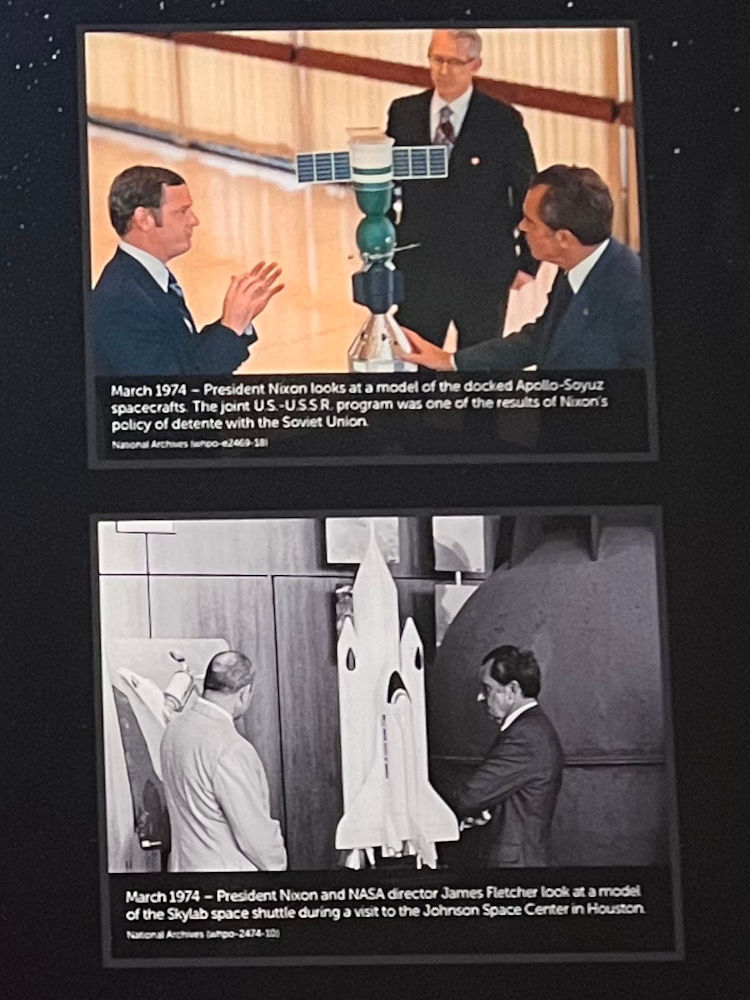
- March, 1974
President Nixon looks at a model of the docked Apollo-Soyuz spacecrafts. The joint U.S. - U.S.S.R. program was one of the results of Nixon's policy of detente with the Soviet Union. - March, 1974
President Nixon and NASA director James Fletcher look at a model of the Skylab space shuttle during a visit to the Johnson Space Center in Houston.
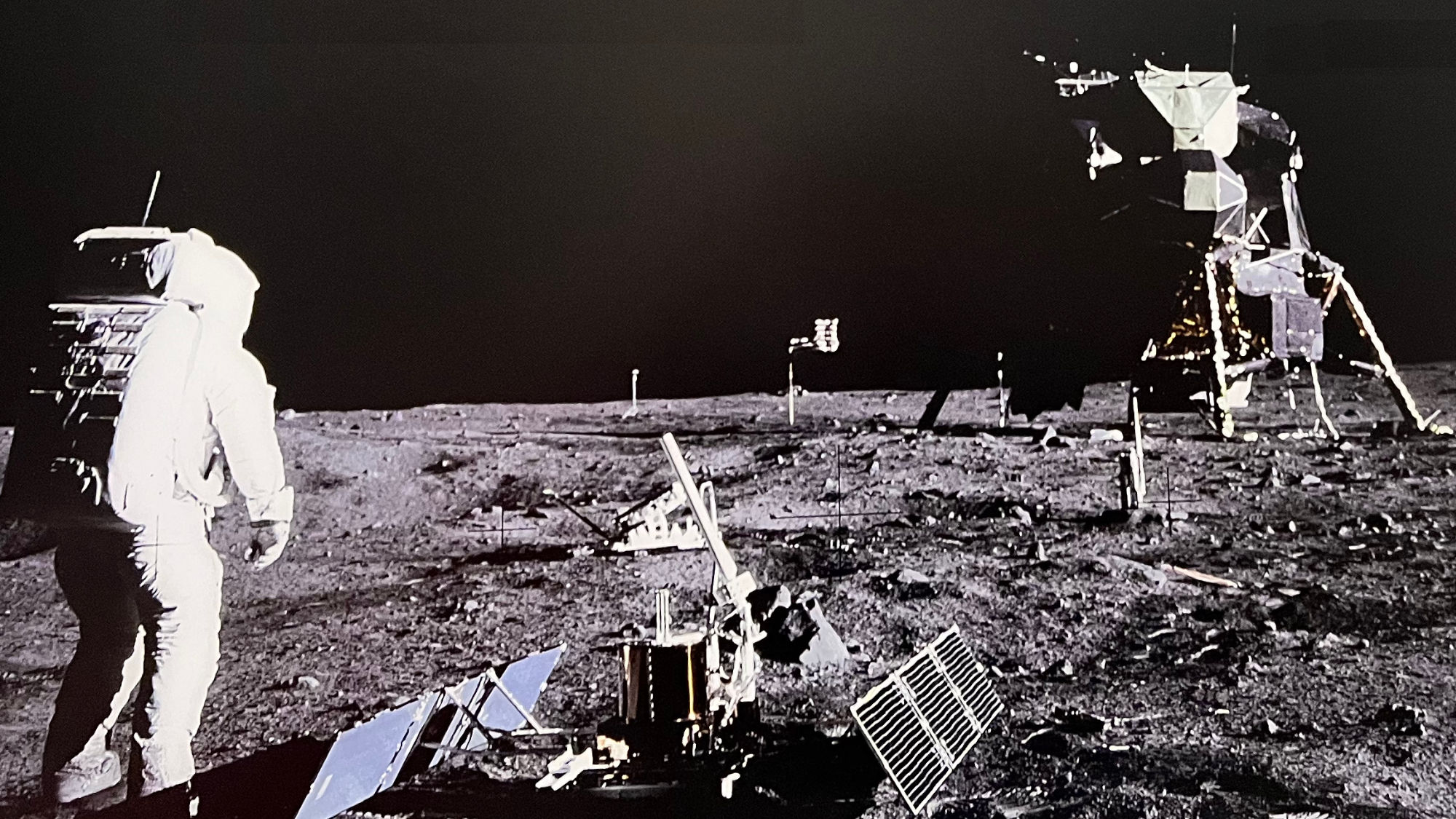
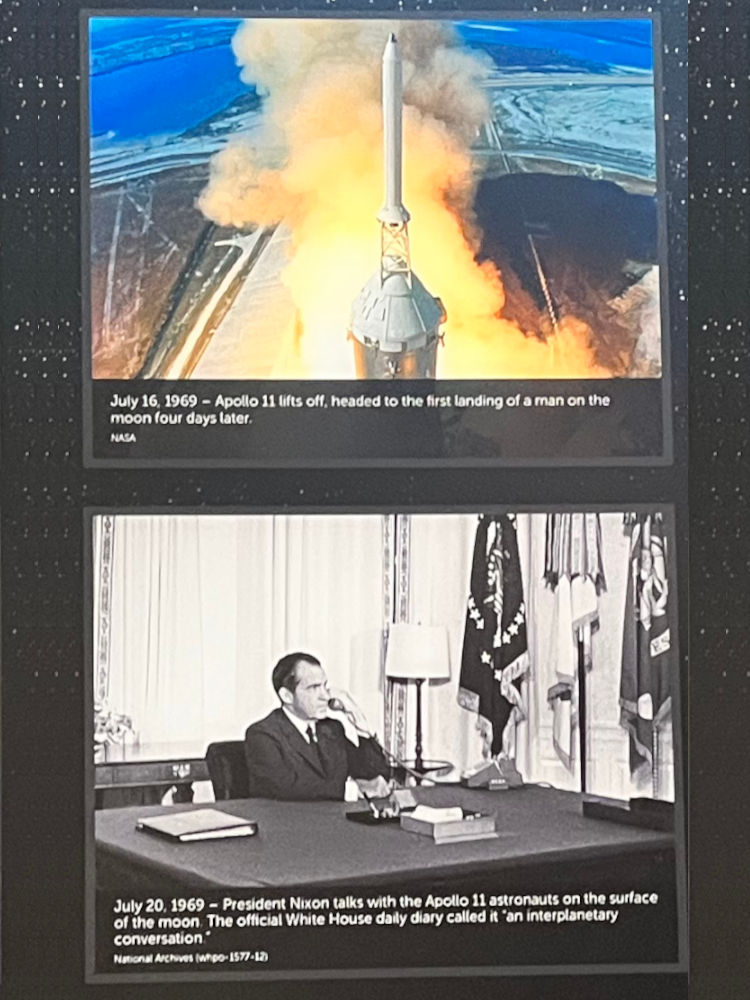
- July 16, 1969
Apollo 11 lifts off, heading to the first landing of a man on the moon four days later. - July 20, 1969
President Nixon talks with the Apollo 11 astronauts on the surface of the moon. The official White House daily diary called it "an interplanetary conversation"
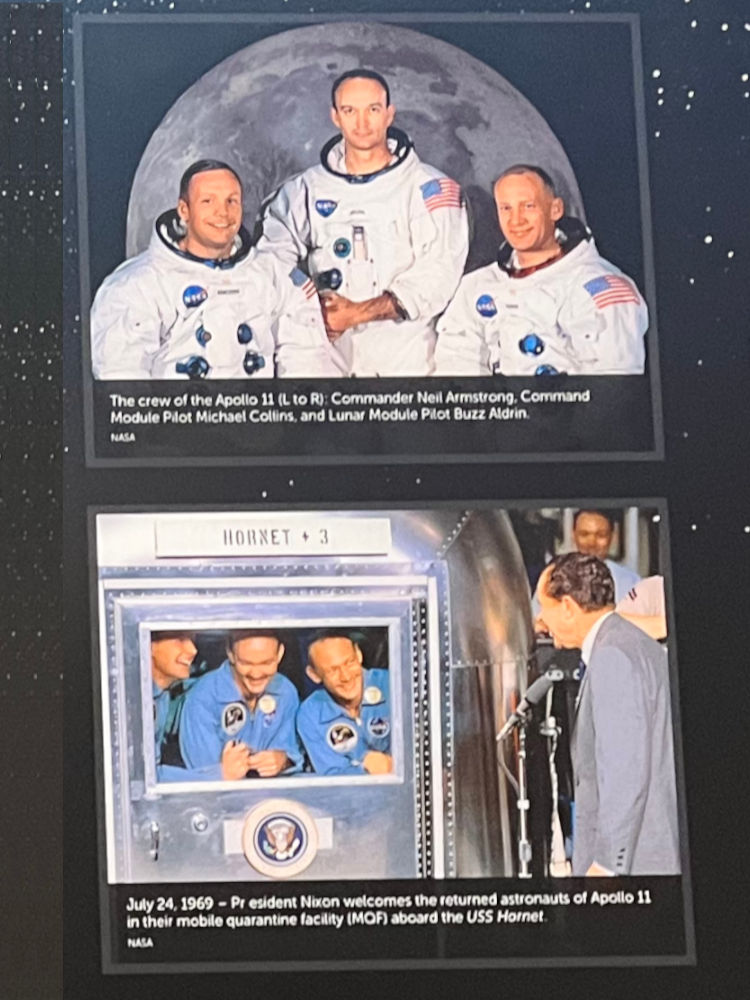
- Apollo 11 Crew
Commander Neil Armstrong, Command Module Pilot Michael Collins, and Lunar Module Pilot Buzz Aldrin. - July 24, 1969
President Nixon welcomes the returned astronauts of Apollo 11 in their mobile quarantine facility (MQF) abord the USS Hornet.
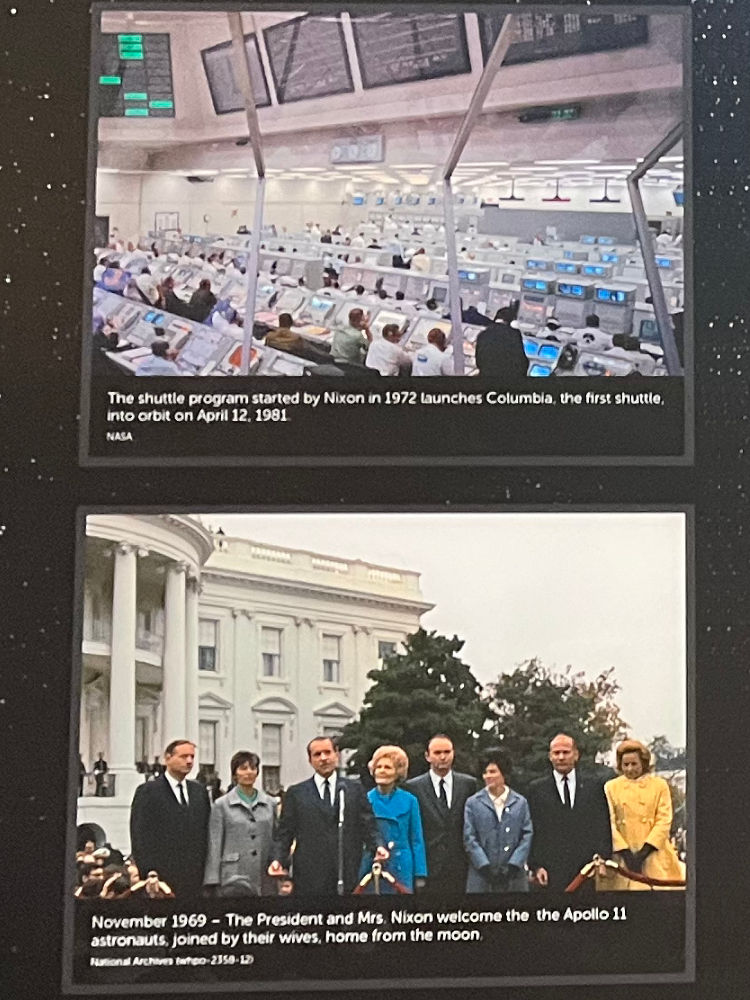
- April 12, 1981
The shuttle program started by Nixon in 1972 Launches Columbia, the first shuttle, into orbit. - November 1969
The President and Mrs. Nixon welcome the Apollo 11 astronauts, joined by their wives, home from the moon.
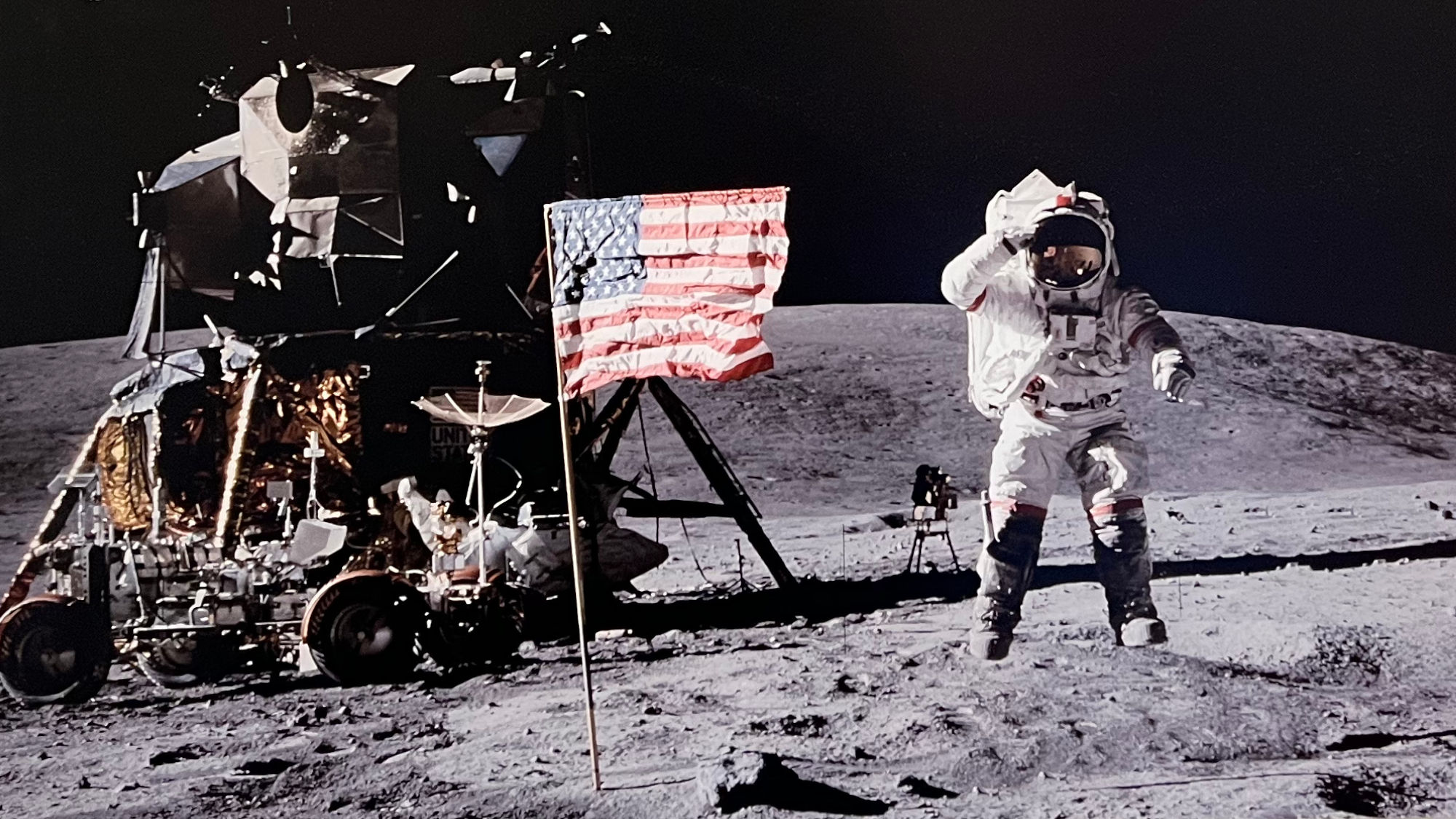
April 21 1972
- Commander of the Apollo 16 mission John W. Young salutes the U.S. flag on the surface of the moon.
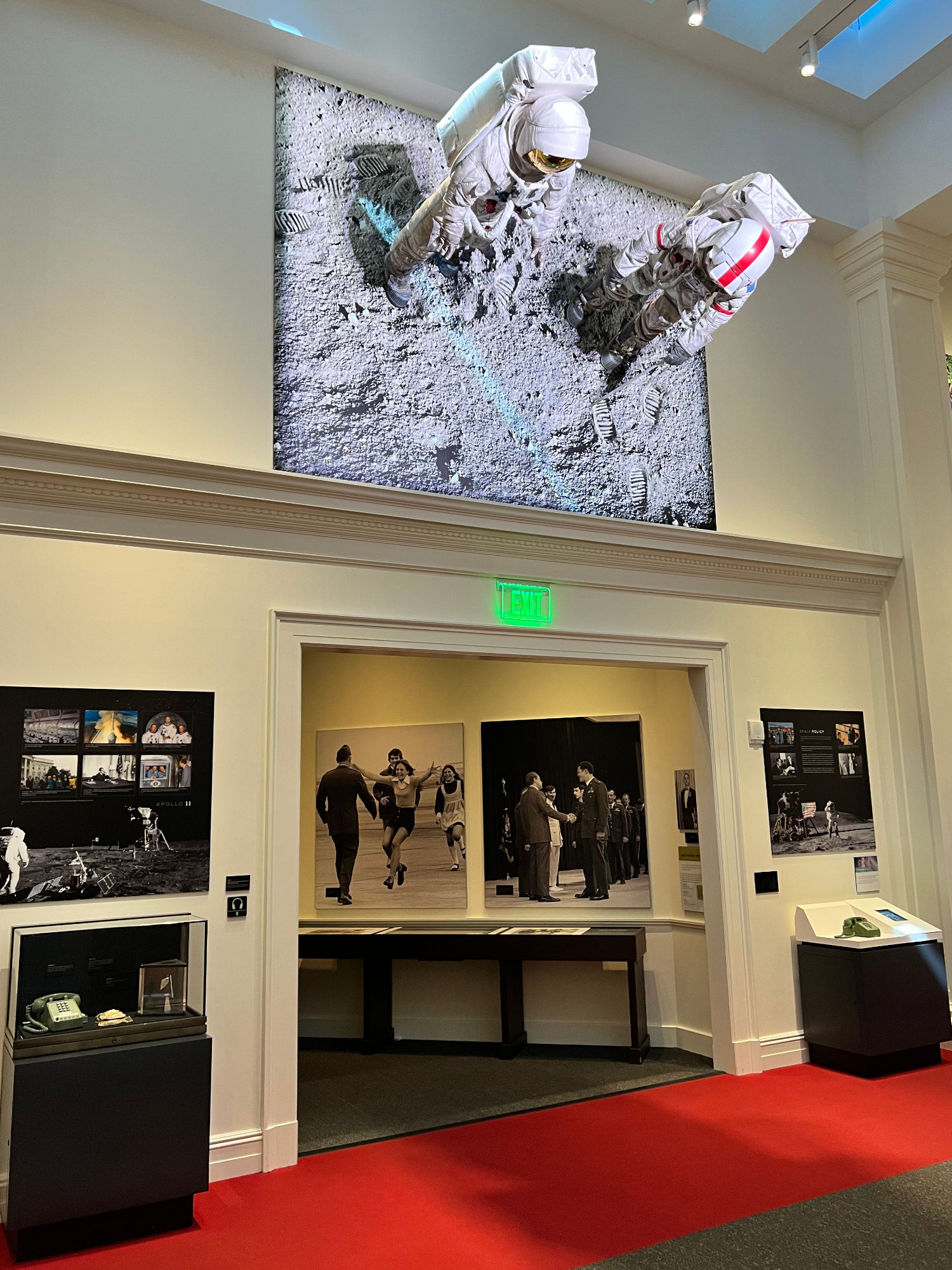
Spacesuits
- Apollo 11 and Apollo 17 spacesuit replicas mounted on the wall.
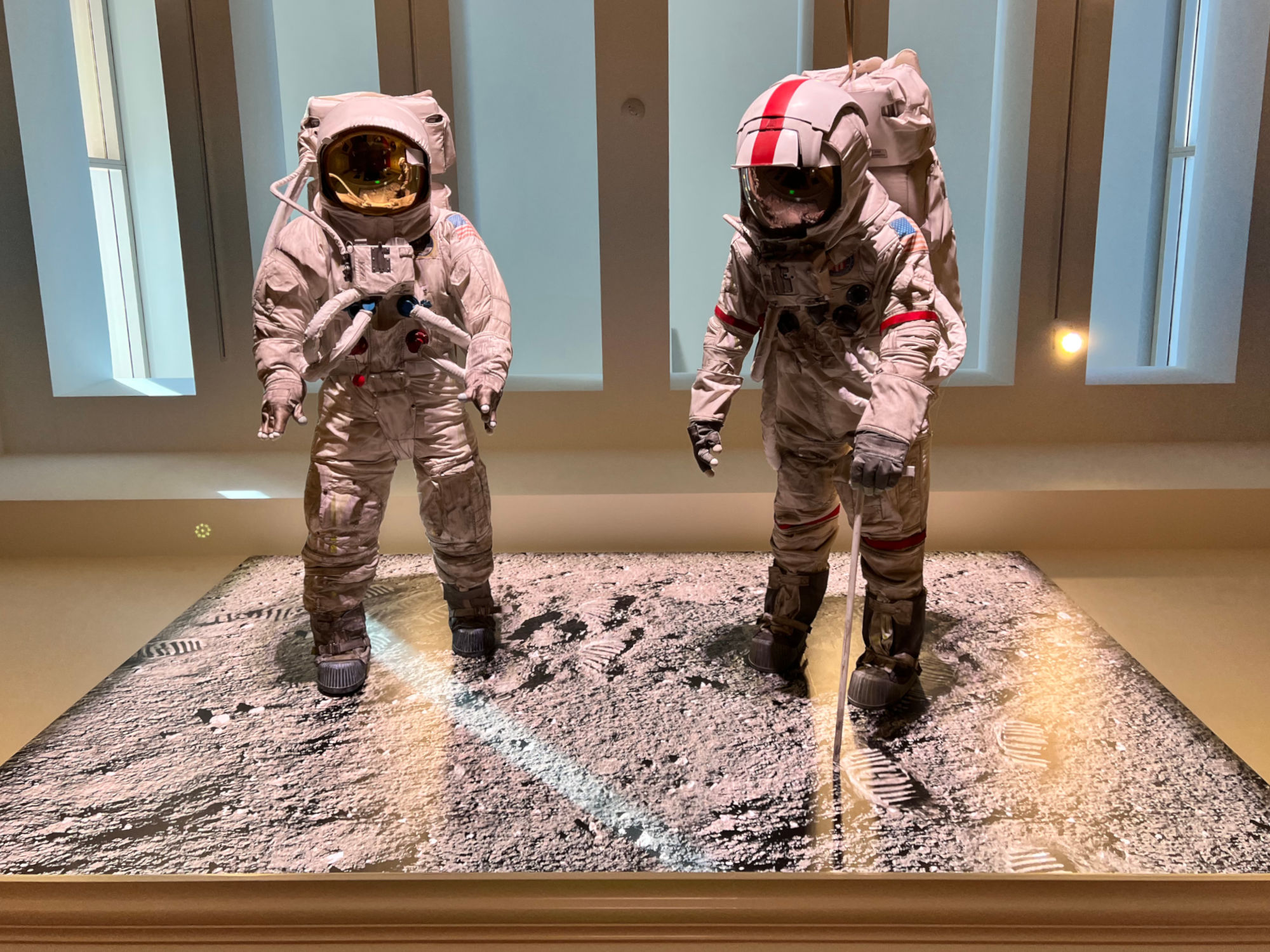
RICHARD NIXON:
As you talk to us from the Sea of Tranquility, it inspires us to redouble our efforts to bring peace and tranquility to Earth.
- Richard Nixon speaking to the astronauts of Apollo 11, July 20, 1969
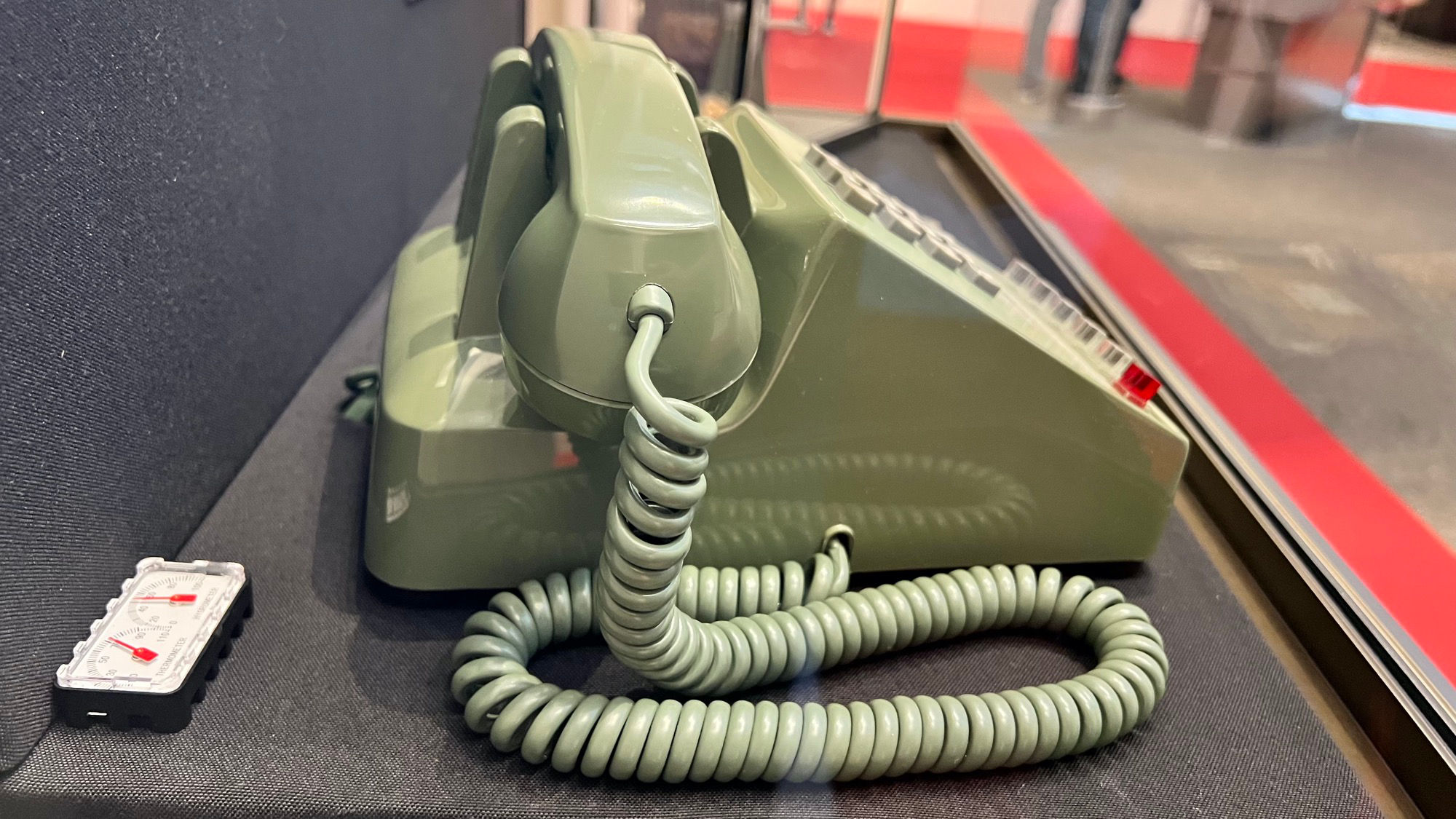
Telephone
- On this green telephone, President Nixon made the historic phone call to the first humans to walk on the moon.
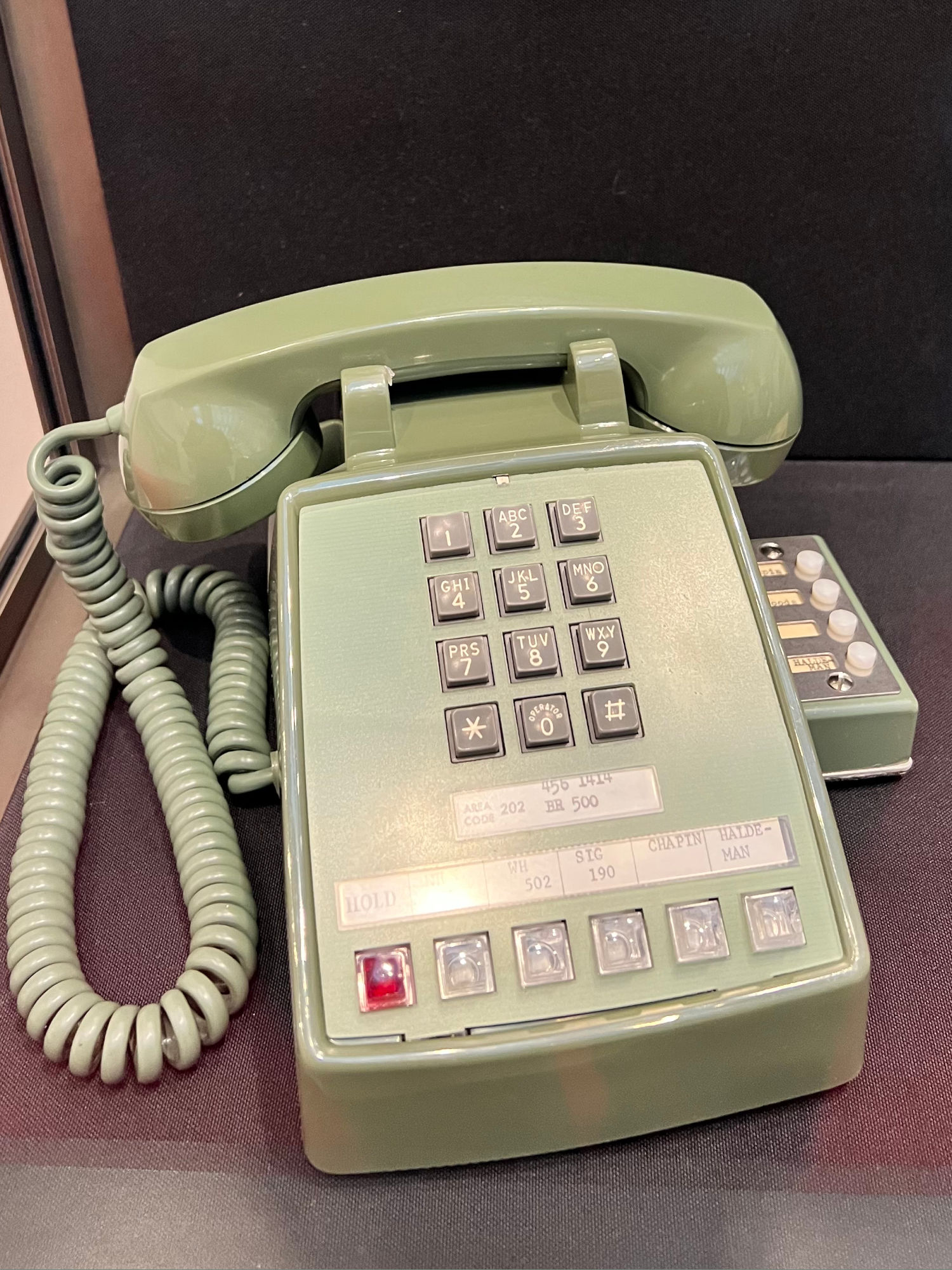
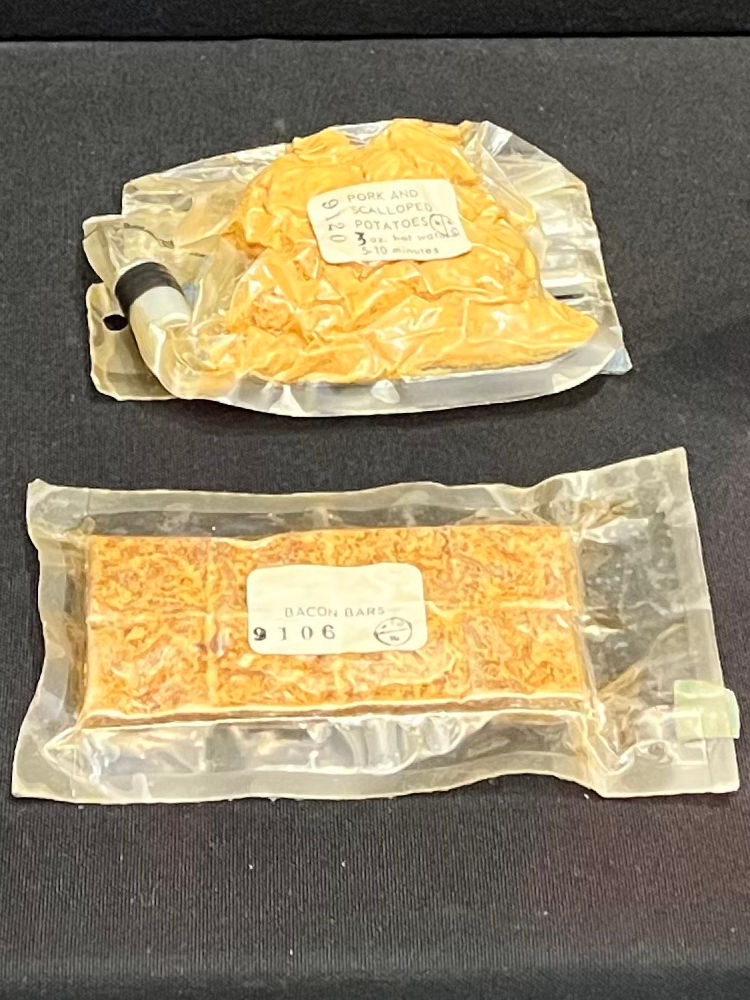
Three bags of NASA Space Food
- Spaghetti
- Bacon Bars
- Pork and Scalloped Potatoes
These returned from the first flight to the moon.
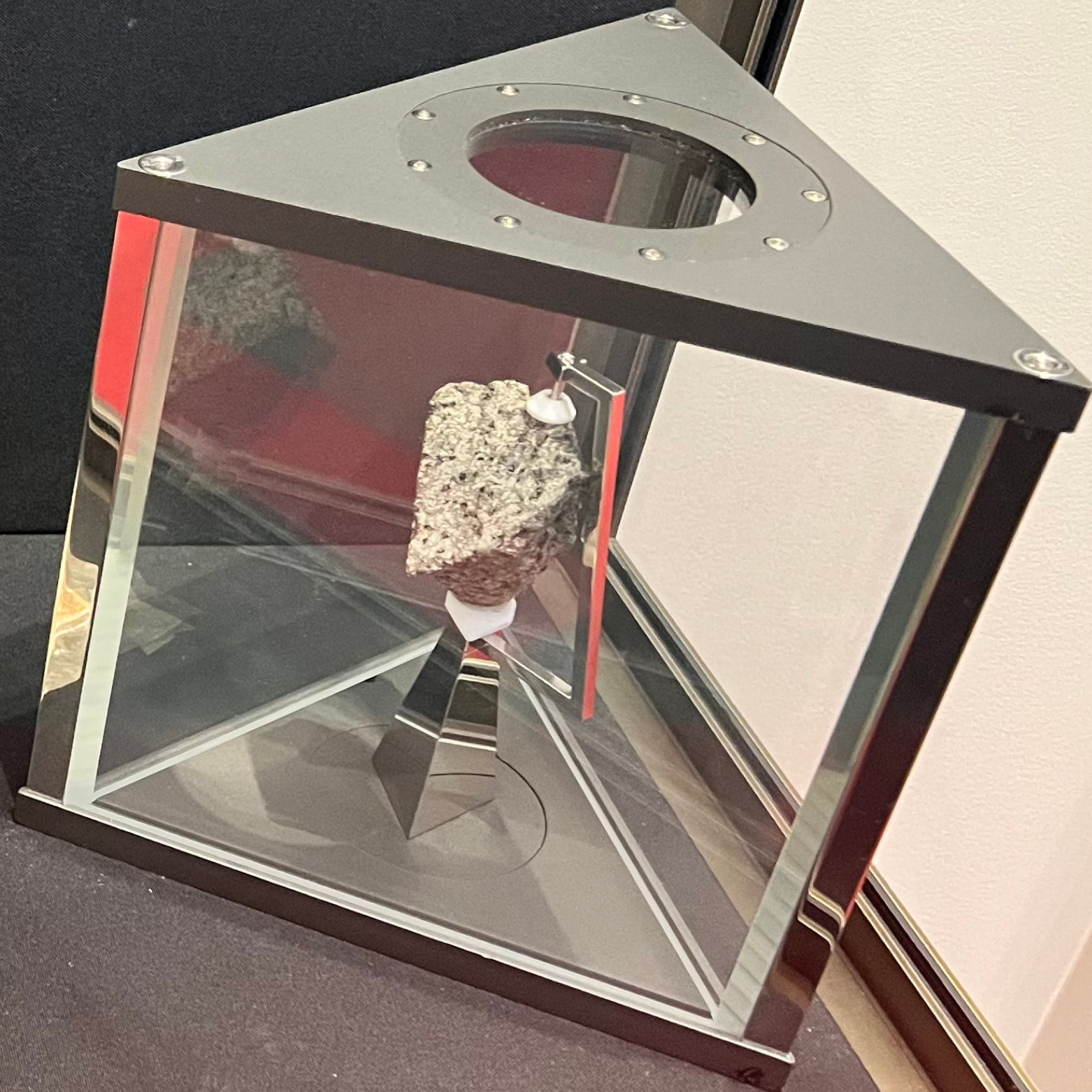
Moon Rock
- Sample of moon rock from Apollo 15 mission.
NASANixon's Space Legacy
As the most important NASA program inaugurated by Nixon, the Space Shuttle served multiple functions:
As the most important NASA program inaugurated by Nixon, the Space Shuttle served multiple functions:
- A home for scientific discovery
- A means of deploying military and communications payloads
- A tool for strengthening foreign relations
Today, NASA's programs are still shaped by Nixon's vision.
TwitterJuly 24, 2019
I immensely enjoyed touring @nixonlibrary and being part of their event last night. The Oval Office's White House phone President Nixon used to call us on post-flight is a great exhibit. All in all, it was a wonderful walk down memory lane! #Apollo11at50
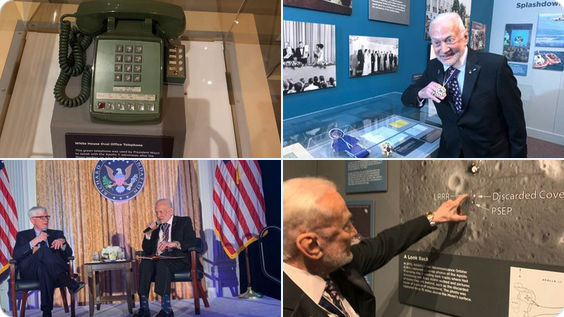
Nixon LibraryThe Longest Distance Phone Call
President Nixon at his Oval Office desk, talking on the green telephone to the Apollo 11 astronauts Neil Armstrong and Edwin Buzz Aldrin on the moon at 11:45-11:46-am.
